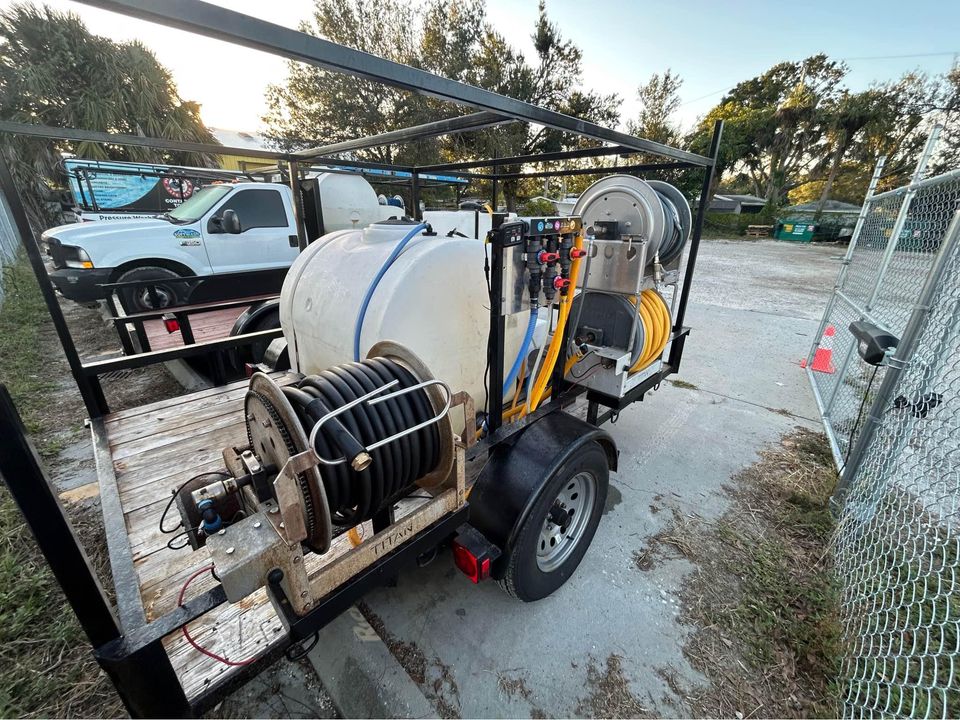
When you’re running a power washing business, your equipment isn’t just gear—it’s an investment. From pressure washers and surface cleaners to trailers and water tanks, your tools of the trade lose value over time. That loss is called depreciation, and if you’re not tracking it, you’re missing out on both financial clarity and tax benefits.
In this guide, we’ll break down how depreciation works, why it matters, and how to calculate it effectively for your power washing operation. 📊🧽
Why Depreciation Matters in Power Washing 🧠💼
Depreciation isn’t just an accounting concept—it’s a practical way to understand how your business assets are aging. Here’s why it’s critical:
✅ Helps you plan for future equipment replacements
✅ Allows you to track the actual value of your assets
✅ Can lower your taxable income (yes, depreciation is tax-deductible!)
✅ Gives you a more accurate picture of your profits
If you ignore depreciation, you may be overestimating your financial health and underpreparing for reinvestment.
Types of Equipment That Depreciate 🧽🔧
Power washing businesses rely on a wide range of gear. Here’s what typically depreciates:
- Pressure washers (gas and electric)
- Surface cleaners
- Extension wands and hoses
- Commercial trailers
- Water tanks
- Generators
- Water reclamation systems
- Office computers, tablets, and CRM software licenses (in some cases)
If you’ve paid more than a few hundred dollars for a piece of equipment, it’s probably eligible for depreciation.
The 3 Main Methods of Depreciation 📘📉
Let’s talk about how you calculate depreciation. These are the most common methods:
1. Straight-Line Depreciation (Most Common)
This is the easiest method. You deduct the same amount every year over the asset’s useful life.
Formula: Annual Depreciation=Cost−Salvage ValueUseful Life\text{Annual Depreciation} = \frac{\text{Cost} – \text{Salvage Value}}{\text{Useful Life}}Annual Depreciation=Useful LifeCost−Salvage Value
- Cost = What you paid for the equipment
- Salvage Value = Estimated resale or scrap value at the end of its life
- Useful Life = Number of years you expect to use the item
Example:
Let’s say you buy a pressure washer for $3,000, expect it to last 5 years, and think you can sell it for $500 at the end. (3,000−500)÷5=500/yeardepreciation(3,000 – 500) ÷ 5 = 500/year depreciation(3,000−500)÷5=500/yeardepreciation
2. Declining Balance Depreciation
This method allows for larger deductions in the first few years of ownership.
It’s more complex but better reflects how many machines lose value faster early on. A common variation is the Double Declining Balance method.
Best for: Equipment that takes a lot of wear and tear early in its lifespan.
3. Section 179 Deduction (U.S. Tax Law)
This isn’t a depreciation method, but rather a way to write off the full purchase amount in the first year.
🧾 With Section 179, you can deduct up to the full purchase cost of qualifying equipment (up to IRS limits) in the year you put it into use.
Best for: Business owners who want to maximize deductions immediately.
How to Track Depreciation Year After Year 📅📲
Here’s how to keep your depreciation organized:
- Create an asset spreadsheet
- Include: Item name, date purchased, cost, method of depreciation, and expected lifespan.
- Use accounting software
- Tools like QuickBooks, Xero, or Wave can automate depreciation schedules.
- Work with a CPA
- A qualified accountant can help you maximize tax benefits and avoid mistakes.
🛠️ Pro Tip: If you lease your equipment or buy it with financing, only the portion you own can be depreciated.
Planning for Equipment Replacement 🔄🧽
Depreciation isn’t just a tax tool—it’s also a budgeting weapon.
📆 Track when major equipment is nearing the end of its useful life
💰 Use depreciation figures to build a replacement reserve fund
📉 Adjust pricing to account for the future cost of replacing gear
Think of it like this: Every dollar you earn should help cover not just today’s job—but tomorrow’s equipment needs too.
What Happens When You Sell or Retire Equipment? 💼⚖️
When you sell or scrap a piece of depreciated equipment, you may face:
- Gain on sale: If you sell it for more than its depreciated value, you may owe taxes on the difference.
- Loss on disposal: If it’s worth less than expected, you may be able to deduct the remaining loss.
🚨 Always track the current book value of your gear to handle these situations accurately.
Bonus: Depreciation for Small Items vs. Big Gear 🎒🔩
Items under $200–$300 (like nozzles, gloves, or tips) are often considered supplies rather than capital equipment and are typically written off in the year of purchase.
However, expensive gear like commercial trailers or water recovery systems must be depreciated over time.
Final Thoughts 💡
Understanding how to calculate and track equipment depreciation helps you build a smarter, more sustainable power washing business. It keeps your finances honest, your taxes optimized, and your gear well-managed.
Whether you’re a solo operator with a single pressure washer or managing a fleet of trucks, this practice ensures you’re thinking like a business owner—not just a technician. 🧽💰📊
Browse Amazon Here For Popular Pressure Washers And Accessories






